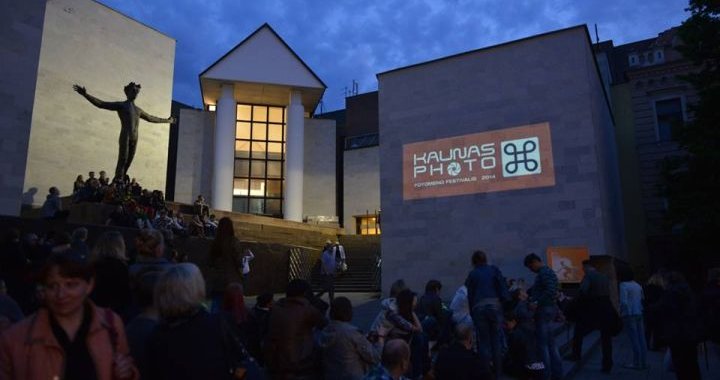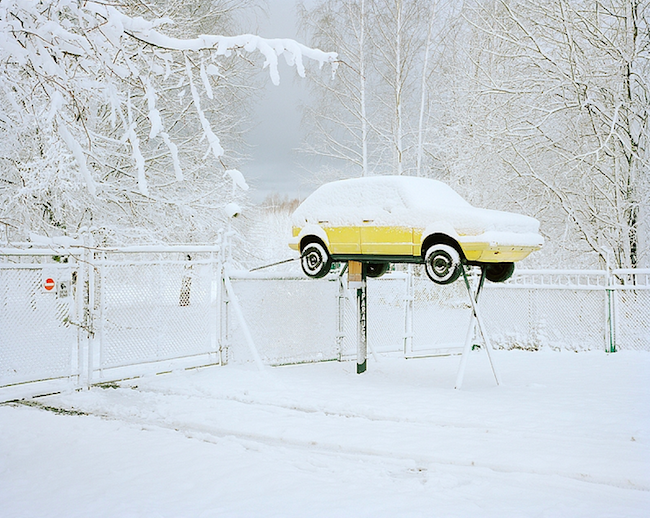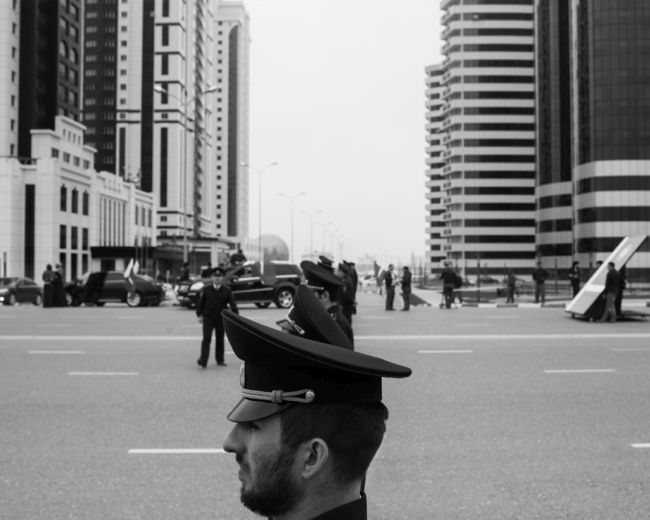
Kaunas Photo, a festival worth visiting
14/08/2014
KAUNAS PHOTO
Kaunas, Lithuania
During the first half of September, 2014
“There used to be something called “the Lithuanian School of Photography”, a very powerful wave of photography that is still respected and celebrated world-wide. From the 1960s to the 1990s, a group of photographers followed a set of unwritten rules by photographing subjects and lifestyle aspects that had been meant to disappear; they focused on people, cared about form, and produced works in large, sometimes lifetime-long series. That era is now gone, but it used to be – and still is – very helpful to us when looking for funding and exhibition possibilities. You do not need to explain to people in Europe what Lithuanian photography was... I mean “once was”. Now it is different. It would be hard to distinguish clear trends in Lithuanian contemporary photography as easily as you can by looking at, for example, contemporary Latvian photography,” is the answer that Mindaugas Kavaliauskas gives when asked about what is it that characterizes photography in Lithuania. Kavaliauskas is the founder and director of Kaunas Photo, the longest-running photography festival in the Baltic States. The festival is taking place for the 11th year this autumn, and its lens focuses much further than just the art photography of Lithuania. Since 2004, the festival has brought together and connected hundreds and thousands of people from the international photographic community.
On the 6th of August, at Chechnya Square in Kaunas, an outdoor exhibition of works titled “Spasibo”, by Italian photographer Davide Monteleone, was launched; simultaneously, the exhibition “Castle Owners”, by Czech artist Tomáš Pospěch, opened in Kaunas Castle Square. Through the 30th of August, the Kaunas Photography Gallery is showing “Cilvēki kāpās”/”People in the Dunes”, the first solo show for the Latvian photographer Andrejs Strokins. And that's not all – the main events of the 11th edition of the festival will all take place during the first half of September, 2014.
sat down for a stimulating express interview with the festival's director, Mindaugas Kavaliauskas.
This is the 11th edition of Kaunas Photo. How has the festival's character and overall mood changed over the years?
Indeed, the Kaunas Photo festival has advanced into its teenage years, but from my perspective, it has been meant to be a festival of discoveries and uncelebrated – or not-enough-celebrated – photography and its creators. In terms of the festival's mood, you'd get a more objective answer by asking the participants and the audience about this. There are some people who were present at the first or, say, the third Kaunas Photo Days (which is what it was called during the first three editions), and who have revisited the festival only recently. Some point out the growth of the festival, and others say that the overall spirit is still there. Because I am the festival's director, and because I am not a big “party-person”, the Kaunas Photo festival holds photographers and their works as the main objects of celebration – not hangovers or endless drinks. It's a festival that takes place in North-Eastern Europe, so an Arles-style party mood should not be expected...
Kaunas Photo is a member of The Union of European Festivals of Photography – could you tell us some more about this association and its importance regarding Kaunas Photo?
The Photo Festival Union was a bright idea. A number of festival directors met in Lodz, in 2005, and signed an intention for collaboration. There has not been any particular activity since then, except for yearly meetings, but the paramount event was our collectively organised exhibition of member festivals in Pingyao, China, in 2008. Another world-wide network, the Festivals of Light organisation, which Kaunas Photo joined in 2007, is a more active structure. Representatives meet yearly to speak about our common issues, to share stories of achievements, and to discuss future possibilities.
Exhibition views. “Museum 24/7”
How were the artists who participate in Kaunas Photo selected?
In the beginning, most of the exhibitions were made up of works found in libraries, museums and books, or else we met the artists through portfolio reviews, or they were recommended by colleague curators. We still use these methods. For example, the exhibition “Cross Country Show”, featuring contemporary Swiss photography and scheduled to open on the 11th of September at the M.Žilinskas Art Gallery of the National M.K.Čiurlionis Art Museum, was entirely composed in such a traditional way. For exhibitions on subjects (with the intention of thorough coverage of the theme), as well as for “the photographic creation of the day”, we do open calls; next to the works that I usually already have in mind, these open calls often bring us beautifully unexpected works. In the 10th edition, we did an exhibition on the theme of “celebration”, with the intention of showing a variety of celebrations – from kids' first birthdays to funerals. This is where the open call saved our show! The same could be said about this year's launch exhibition about museums, “Museum 24/7”. The results of the open call were overwhelming – they simply left in their wakes the works that we had already had in mind. In tandem with the open calls, we founded our own database, called folioPORT.org, which is simultaneously an on-line portfolio review platform. Once a year we invite photographers to submit works, and then they are judged by some 50 reviewers from across the globe. Top-rated photographers get invited to do a solo show, or they get a monograph published, or are awarded some other prize...
What are the themes that have been touched upon in the festival’s exhibitions?
“Market”, “Time”, “Mysteries, Secrets and Illusions”, Humour, “ Recycled photography” (“Nine Lessons of Photography”), “Duets and Duels”, “Untold Stories”, “Thanks for the Greetings”, and other, less strict themes have served as the frameworks on which earlier editions of KAUNAS PHOTO have been built. Also, a geographically-based dimension has been part of the festival since the beginning. We have put a spotlight on photography from the Nordic countries (2004 and 2006), Europe (2005), Georgia (2007), Australia (2008) and Poland (2009), and we're renewing the tradition this year with an exhibition, a conference, and artist talks all on Swiss photography.
The Kaunas Photo Festival is the longest-running annual photo art festival in the Baltic States. It started on the 17th of May, and the main events will run during the first half of September. Could you please trace out the main events that will take place during this time?
This year is the most tricky one yet... The museum exhibition is an idea that has been awaiting its fulfilment for several years now. I proposed this show to the National M.K.Čiurlionis museum, our important partner, and they accepted it, but we needed to wait until a particular space would be ready to accommodate the show on Museum Night, which is indeed when it opened, on the 17th of May, 2014. This exhibition, featuring the works of 13 artists, has become a milestone of the 11th edition because it will be running through the end of the summer at the M. Žilinskas Art Gallery.

Andrejs Strokins
Several more warm-up exhibitions are: Andrejs Strokins (Winner of the KAUNAS PHOTO STAR 2013 portfolio competition) at the Kaunas Photography Gallery; Tomas Pospech (Czech Republic), co-organiser of the festival, with his open-air exhibition of “Castle Owners”; and Davide Monteleone (born in Italy) with “Spasibo”, also an open-air show, but about post-war Chechnya, on view at Chechnyas Square in Kaunas. The latter ones are part of the main festival program that pays tribute to/celebrates “the '74 Generation” – European photographers born in 1974 and who will, therefore, be turning 40 this year.

Davide Monteleone
Could you list the highlights of the main events that will take place during the first half of September?
As you see, this year's festival is going on exactly 10 years after our first festival, but we have already done the theme of “celebration”. So this year, we will remember festivals that were founded in 2004 and photographers – my colleagues – that were born in 1974. As for the festivals, I invited their directors – Louise Clements of Format (UK) and Julia Durkin (New Zealand) of the Auckland International Photo Festival – to present the stories of their festivals, the reasons and circumstances of their founding. 2004 was an interesting time in photography: the transition from analogue to digital, dramatic growth of the internet and the portability of mobile devices, the decline of agencies, etc. Exhibition-wise, one of the two major group exhibitions will bring together eleven European photographers that were born in 1974 (my birth year, too), such as Simon Roberts (England), Borut Peterlin (Slovenia), Kirill Golovchenko (Germany-Ukraine), Pekka Niittyvirta (Finland), Gintaras Česonis (Lithuania) and Nick Hannes (Belgium), to name a few. And then there's the Swiss photography exhibition. Both will be hosted by the M.Žilinskas Art Gallery. The “'74 Generation” show will be accompanied by a book that has been edited by Irina Tchmyreva (Russia) – art historian, curator and director of the PhotoVisa festival, and designed by Angel Luis Gonzalez (Ireland) – the director of the PhotoIreland festival and a real photo book geek. Here I return to your first question, on the motivation for the mood of the festival. Since I hate partying just for the sake of doing so, I decided that we – those turning 40 and whom I consider to be my friends – would do it together, in Kaunas, with a show and a book.

Exhibition views. “Museum 24/7”


